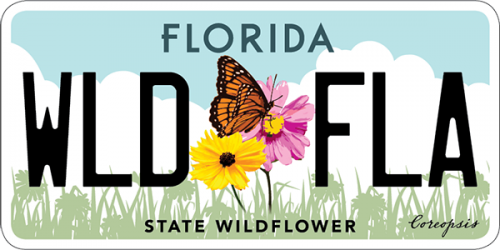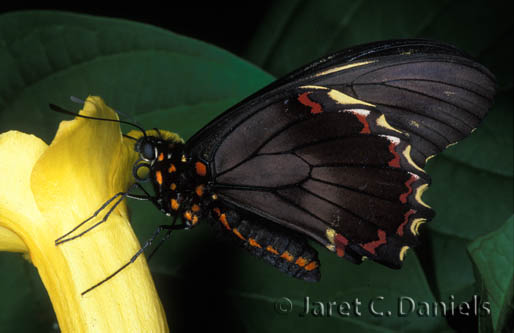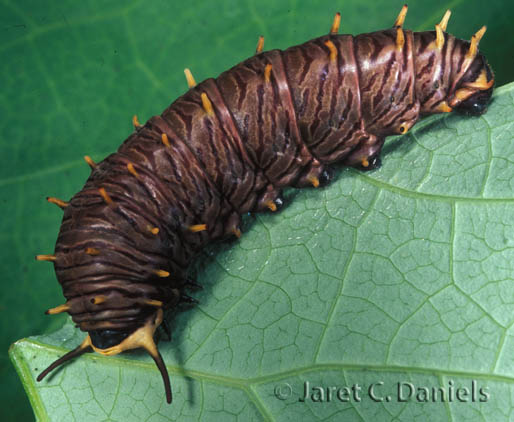- Family name: Papilionidae/Swallowtails
- General description: tailless; black with broad yellow submarginal spot band and scalloped hindwing margin. Ventral hindwing brownish-black with marginal row of elongated, curved red spots. Abdomen with lateral red stripe.
- Field Marks: Hindwing lacks tail; wings with broad yellow spot band; abdomen with lateral red stripe
- Sexes: appear similar
- Wingspan: 75-102 mm
- Life Cycle: Egg: orange-brown, spherical, laid in clusters on host leaves Mature larva: Brown-black with short fleshy tubercles Chrysalis: brown or green
- Number of Generations: Two or more generations
- Flight Season: March-December
- Abundance: Common
- Habitat: parks, gardens, disturbed sites, old fields
- Larval Host Plants: Caligo flower (Aristolochia elegans); other ornamental pipevines (Aristolochia spp.)
- Similar Species:
- Additional Information: Adults have strong, rapid flight and continuously flutter wings while feeding. Excellent colonizer.
- Range in Florida
 The Florida Wildflowers & Butterflies projects at the Florida Museum are sponsored in part by the State of Florida and the Florida Wildflower Foundation, Inc.
The Florida Wildflowers & Butterflies projects at the Florida Museum are sponsored in part by the State of Florida and the Florida Wildflower Foundation, Inc.

